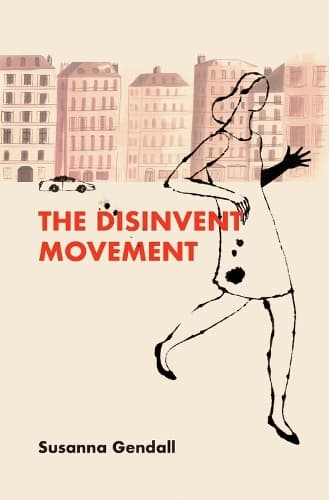Review: The Disinvent Movement
Reviewed by Renee Liang
What exactly is The Disinvent Movement? Like its heroine, who isn’t exactly a heroine, this book is hard to define. Although it's described as a novel, it isn’t really. Its short sections, 81 in total, aren’t chapters; they’re short, less than two pages long (in some cases only half a page). They’re concentrated bursts of elliptical musings, reminiscent of flash fiction but not self contained enough. One was published separately as a prose poem but this isn’t a collection of poetry either. Even the purported subject of the book – a fictional movement to “disinvent” real world objects – only appears in glimpses before sliding out of view between the pages.
Author Susanna Gendall, like her main character, is a New Zealander moving between borders and based in Europe. Gendall is a master of wry observation. Her prose sparkles with a sly wit in which a laugh-out-loud moment seems always just below the surface. There’s a delicious sense of rudeness when reading the descriptions of, say, melon pollination.
But isolation and loneliness are never far below the surface, either. And as the many characters — friends, casual lovers, passers-by — come briefly into focus, we see reflected in them the nameless heroine. We start to build a picture of her life and the tragic truths at its core. At times we even wonder if we know her better than she knows herself.
About halfway through, it dawned on me where the disinvention was happening. I saw a woman balancing on the edge, moving between the borders of her self, slowly losing parts of herself in the cracks. I suddenly realised why important characters, such as her husband and her children, are described as if they are distant strangers. It was a way to sink the reader behind the eyes of someone who was disappearing. I started noticing the fracturing along mental and emotional fault lines. It felt self-inflicted. But was it?
Gendall is delightfully experimental in the way she piles her small gems of prose on top of each other, tangentially building character, plot, theme. No sooner has one small pile almost formed an idea than she starts piling up another. I found it took a lot of energy to keep up; it was easier to keep coming back for snatches, much like the way Gendall presents her prose. I found new things each time I reread passages: there is indeed something poetry-like about the way Gendall builds extended metaphors, reveling in all the senses. One particularly intriguing set of passages turns the image of harvesting plums into a complex dissection of human relationships, sexual and otherwise.
It’s an experiment that, for me, works. There was a sense I’d experienced something new in fiction when I finished the book. I still wasn’t sure what exactly had happened, or how it had ended. I suspect the author intended it that way. I didn’t mind. Funny, sad, brilliantly observational, this is a book that will keep you guessing until the last page.
Reviewed by Renee Liang
